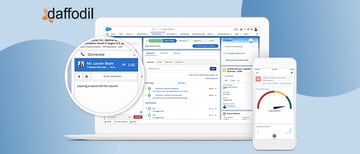
The term integration is used so many times in so many ways that sometimes it loses its original essence.
What is integration after all? It’s nothing but a solution for effective data syncing. It’s making sure that information is available wherever and whenever it’s required. HRIS integration means connecting and sharing data among different HR functions such as recruitment, payroll, and performance.
What is HRIS Integration?
Before we define what HRIS Integration is, let’s make you aware that there is a difference between Integration and Interface.
Integrated Human Resource Information System (HRIS) is the consolidation of multiple HR applications into one sophisticated system via Application Programming Interface (API) by auto-syncing and sharing of data in real-time.
On the other hand, Interfacing can be interpreted as a link between the two systems for information transfer and is usually done manually.
How can HRIS Integration benefit you?
Once you integrate your HRIS with other HR systems it can benefit your organization immensely. Let’s explore how.
Enhanced data accuracy: Automatic data entries and syncing of information across HR systems eliminate the possibility of errors and data duplication thereby improving accuracy. You or your team only has to enter data once which gets updated across HR systems automatically leaving you with more time to do other tasks. With every update, the integrated systems share and transfer data from one source to the other seamlessly.
Single point access: With the entire database available in a single view, you can make informed and data-driven decisions. Your team doesn’t need individual passwords or usernames to log in. All you need is a single set of credentials to access the system. What’s more? Your employees can also view their salary history and more when you integrate payroll with HRIS.
Improved reporting: The reporting process gets simplified with a single, unified platform. Create more accurate reports with better insights with all data and records available at a centralized location.
Better compliance: If your organization is working on global payroll, that calls for compliance with multiple laws. Seems too much? You can ease it off by HRIS integration. With the integrated system in place, there are lesser chances of mistakes ensuring you remain compliant.
Also Read: How a cloud-based HCM software can boost the operational efficiency of your HR department
Before you consider HRIS Integration…
Have you thought of a well-planned integration journey? Before you take the plunge here are a few things to keep in mind before HRIS integration.
•Ask yourself why do you need integration? If you do not have a well-defined agenda in the first place then even after integration, you’ll be as clueless. Discuss business goals with heads of different departments and learn what is amiss from your current system. Get your team involved in the feedback system to gain more insight into what needs to be fixed and how.
•The second question you need to ask yourself is – what will it take to implement integration? Have you identified possible setbacks post the integration? List the number of processes you are running currently, to the teams involved in data management, and if there is an Enterprise Integration Strategy (EIS) in place already and how long will you need to run the training sessions to familiarize teams with integration?
•Next comes, the when part. The ideal answer to when should you go for integration is now. But that is not always the case. You can’t just rush into something as important and impactful as integration. Make sure it doesn’t collide with your organization’s other important business plans as you will be needing teams and individuals for a successful integration process.
•Another important factor to note is vendor support. Ensure beforehand that your vendor will provide support throughout the integration process so that it reduces load off your in-house IT team. Besides, the vendor has a deeper understanding and knowledge about the best integration solutions.
The key HRIS IntegrationsYour HRIS can be integrated with finance or ERP but here we are going to talk about Human Resources. Depending on your business needs you can choose which integrations to go for. The four main HR integrations which you should consider are mentioned below.
Payroll Management: For a streamlined HR process, connecting payroll with HRIS is crucial. In a non-integrated system, you will have to key in employee data twice – one in the HR database and the other in payroll. And double entries may result in errors. An integrated system will do away with these issues.
Workforce Management: Manage schedules, labor tracking, and performance management by integrating workforce management with your HRIS.
Applicant Tracking System: This comes under Talent Management, which is significant in employee retention. By integrating this with HRIS, you can easily create and promote a system that is best suited to your brand needs.
Learning Management System: Learning Management System or LMS is yet another sphere which when integrated with HRIS can help you track an employee’s progress better with in-depth reports and analysis.
Also Read: Switching from manual HR process to HRIS: All you need to know
Final words
HRIS Integration needs some serious thought. Integrating your HRIS with other applications will make your entire HR department more efficient by providing a seamless HR platform. And to achieve this goal, you must first analyze various what-ifs.
Whether you’re leaning towards upgrading to a better HRIS or searching for a software solution, we can help. Contact our team of experts to find the best solution for your software needs.


